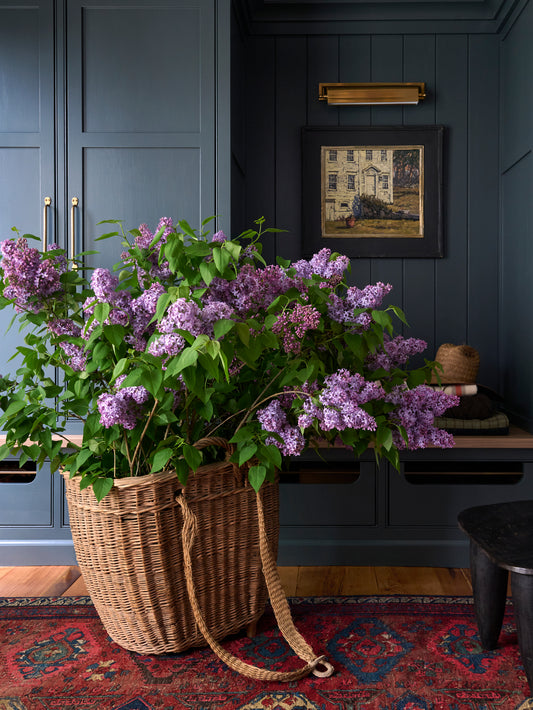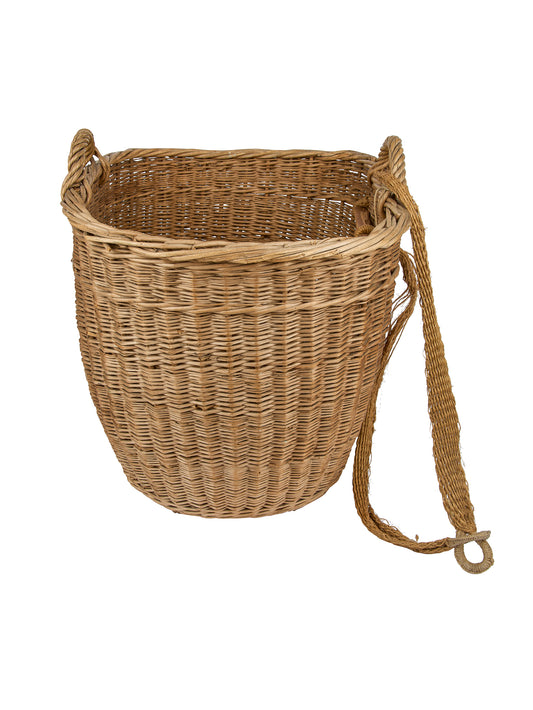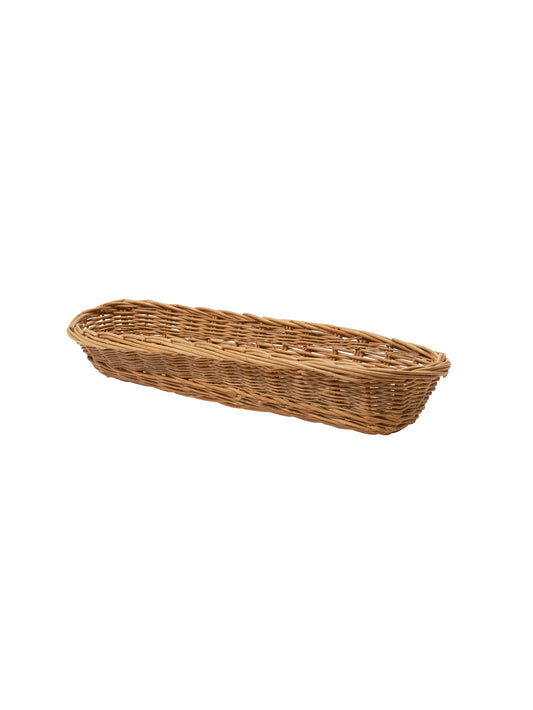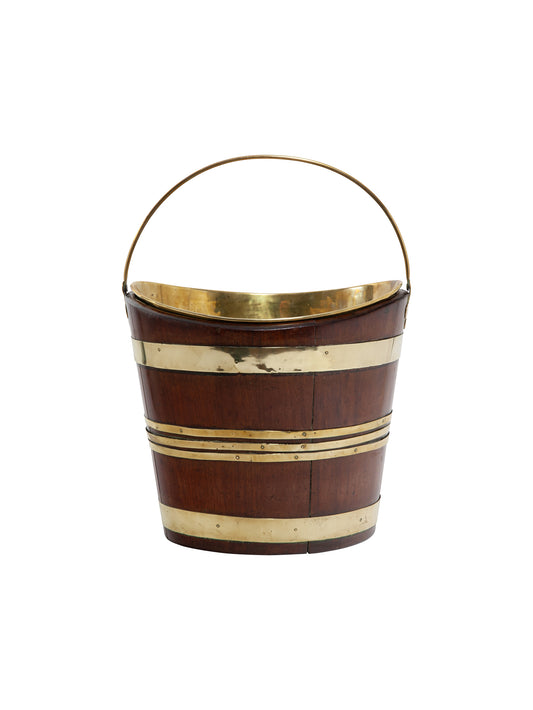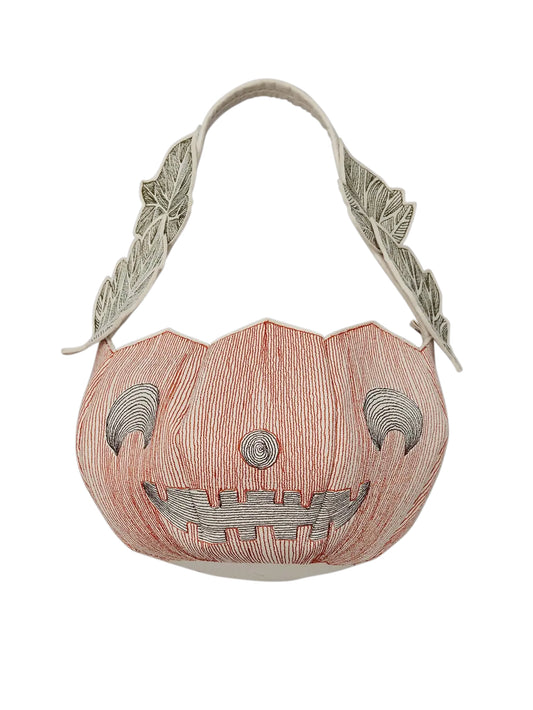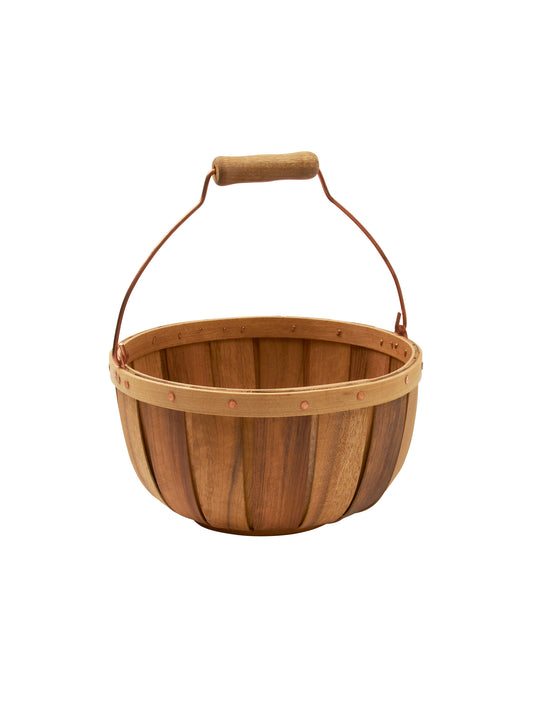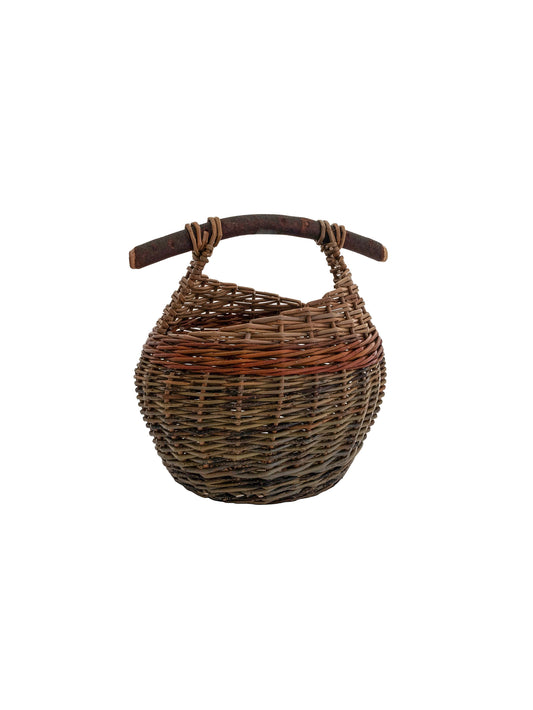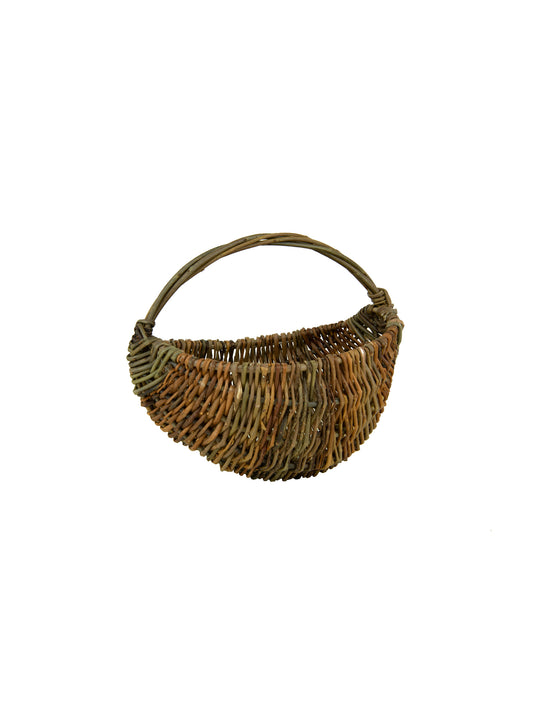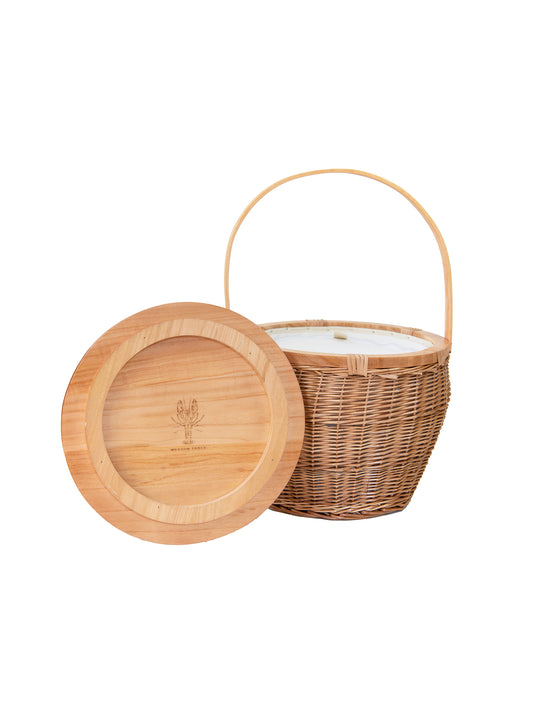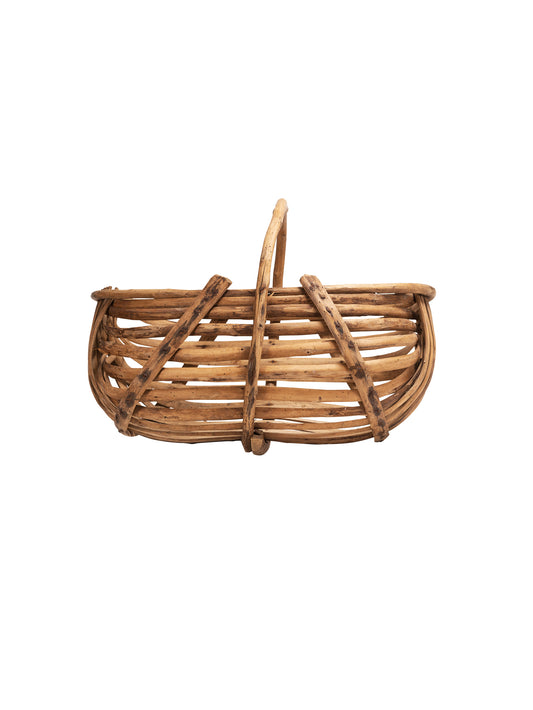There are apple picking, clam digging, kindling storage, garden harvesting, collecting, and laundry baskets. They all have in common a 10,000-year basket-making history.
Traditionally made from natural materials such as wood, vines, reeds, and grass, industrialization allowed for the same techniques to be used to make wire baskets. Our collection of new and vintage baskets employs the same artisan techniques used for centuries that elevate chores and to aesthetically pleasing decor and experiences. They are all handmade specimens, many with long histories that represent a time and place in the world when people made and used baskets to assist with daily chores. Baskets made for backyard or farm egg collection were small and round and over time evolved from wicker to foldable wire baskets. Garden baskets were similarly utilitarian and often woven from twigs, wicker, and vines, stronger materials that could host heavy kitchen garden bounties such as potatoes and onions, as well as cut flowers and vegetables. Other small baskets, mostly European-made, are designed for foraging mushrooms and berries. These baskets may have wood-bent arms that slide into the crook of the elbow to keep both hands free for searching the woodland floor for fungi and gathering berries from bushes quickly. Back in the day, bending wood to make rounded handles was done by soaking the wood in hot water until pliable. The French lavender harvesting basket has a most unusual shape: wide and flat, these baskets, mostly made from wicker, allow for large piles of flowers to lay flat and protect the flowers' heads and stems. Baskets used in French patisseries, boulangeries, and English high street markets are today collectibles used as functional decor. These baskets stand the test of time and create a sense of warmth in the kitchen when filled with kitchen towels or apples or bread or farmer’s market bounty. A basket may also come lidded, ideal for picnics and a bit of nostalgic romance when a picnic basket is filled with wine and cheese and carried to a spot along the river bank. Vintners originally made grape and champagne baskets known as hods with straps or handles for collecting grapes from wicker and vines, but later turned to lightweight galvanized backpack-style baskets for collecting ripe fruit and maximizing transport efficiency. Fishermen have for centuries, collected clams and oysters using handmade wire weaving techniques with rows of rounded weaving large enough to allow clam diggers and oyster harvesters space to rinse their catch, but small enough to prevent the bounty from falling out. During the 1920s, deep round slatted baskets known as bushel baskets were developed in the USA to transport citrus from Florida to northern cities. As the baskets were all uniform in size, it created a simple sales tool for standardizing the filing, transporting, and selling of fruit. Whether you choose a basket for form or beauty, baskets made from natural materials will always be sustainably chic.
